Do Axolotls Eat Their Eggs: How to Protect Axolotl Eggs Until Hatching
Breeding axolotls in captivity is the primary way to ensure these unique neotenic salamanders survive for future generations.
Axolotls are critically endangered in the wild, according to the IUCN Red List.
This is primarily because axolotls only live in a certain lake system outside of the capital city of Mexico. The more that lake system gets polluted by people and diverted for industry needs, the less chance wild axolotls have to survive and reproduce.
Luckily, axolotls are becoming ever more popular in the aquaculture community as interesting and long-lived pets. But if you want to breed axolotls successfully, you need to know exactly what to do once your female has laid her eggs!
Do axolotls eat their eggs? If yes, how soon and how many? What do you need to do to protect the eggs from the parents until they hatch? Find out everything about axolotls and eggs in this article.
Watch An Experienced Axolotl Breeder Remove Eggs from the Tank
This axolotl breeder clearly understands both the how and the why of removing axolotl eggs from the aquarium.
In this video, watch the breeder skillfully use a turkey baster to remove and relocate the axolotl egg sacs from the mother axolotl’s aquarium.
As the breeder points out, it is also important to keep watching the mother axolotl for more eggs until you are sure she is done laying. This keeper sounds quite surprised that the axolotl mama is laying so many eggs!
Do Axolotls Eat Their Eggs After Laying?
The short, uncomfortable answer to this question is “yes.”
As the Salamander Site points out, axolotl females typically lay eggs within hours after breeding behaviors are observes.
The typical range is 12 to 20 hours after breeding, although in rare instances it may take longer. It can take up to 48 hours for the female axolotl to lay all her eggs.
The moment you start to see eggs is the moment you should start to remove the eggs. Reptiles Magazine explains that if you don’t remove the eggs right after the female has finished laying, she may return to eat them.
However, this is not the biggest threat the newly laid eggs will face as they continue to develop until hatching.
Should You Remove the Axolotl Parents or the Axolotl Eggs?
This is a great question and it is one that experienced axolotl breeders frequently debate.
The truth is, there is no one “right” or “wrong” answer to this question. You can choose either option depending on your home aquarium setup and what is easiest.
What you may want to know if this is your first time going through the axolotl breeding process is that axolotl eggs are surprisingly hardy. Even though they look very tiny and fragile, they typically survive the moving process very well.
This is because each egg is encased in several jelly-like layers of a protective coating that helps cushion the eggs from damage.
If your mother axolotl lays the eggs on a rock or other surface, you can just gently detach the jelly from the surface and move the eggs together as a group. If the mother lays the eggs in a long string, the turkey baster method works equally well.
Axolotl adults are actually more fragile than the eggs in terms of safely handling them and moving them between tanks. This is because they have very soft bodies and their external gill “feathers” can be easily damaged.
So you may actually find it is easier to remove the eggs and leave the parents in the tank, although you may also want to separate the parents unless you are hoping for another immediate clutch of axolotl eggs.
This is an important safety consideration as well. Water Critters advises not breeding an adult axolotl female more than three times over her whole life span.
Fewer breedings are even better, if possible, and will help you avoid unhealthy hatchlings with genetic mutations or other health issues caused by a stressed-out mother axolotl depleted from too-frequent breeding.
What Happens After Axolotl Eggs Hatch?
Once the female axolotl has finished laying all her eggs and you have safely relocated them, your main job will be to keep the aquarium environment at the right temperature to encourage hatching.
Axolotls.org explains that cooler temperatures can cause delayed egg hatching, while warmer temperatures will speed up the process. On average, it takes 14 to 20 days for eggs to hatch.
The moment you see larvae starting to emerge from your axolotl eggs, you have up to 72 hours before you need to start actively feeding them. This is because each larva emerges with a little bit of emergency yolk to tide them over.
Once that yolk ration is gone, each larva will start actively eating anything it can find, including the eggs and other larvae right around it.
Caudata Culture offers an excellent feeding webpage that lists out some of the best micro-foods for these very tiny hatchling axolotls.
It is also important to be aware that newly hatched axolotls have a very hard time eating anything, including each other.
So if you are not able to easily find the right live micro-prey to feed, you risk your axolotl larvae starving to death in front of your eyes.
Axolotls Are Cannibals All Throughout Life
Axolotls as a species are known to be cannibalistic all throughout their life cycle.
However, they are much more likely to eat one another when they are young, growing rapidly, and needing daily feedings to sustain their development.
This is also the time when you are far more likely to witness the axolotl’s remarkable regenerative powers, since hungry larva may nip off tails, arms, or legs of another larva for food.
Sometimes you may think you are feeding your axolotl hatchlings properly and they still start eating each other. Why might this happen?
As the Axolotl.org website explains, hatchling axolotls absolutely need to be fed live prey only. They hunt by watching for movement and are unable to detect dead prey.
So even if you are feeding plenty of dead micro-food, your axolotls will begin trying their best to feed on each other instead.
How Much to Feed Newly Hatched Axolotls So They Don’t Eat Each Other?
Newly hatched axolotls have even less visual acuity than juvenile or adult axolotls, and that’s not saying much.
As the Dallas World Aquarium explains, even in adulthood axolotls hunt primarily by movement or scent. Instead of “noses,” axolotls have what are called “lateral line organs” which are located down their sides.
Axolotls are also primarily nocturnal throughout life, which means they become more active during the night hours when many of their natural predators would be sleeping.
Newly hatched axolotls need to eat at least once and preferably twice per day. You may want to feed them at 12-hour intervals in the early morning and later evening when the light is lower.
Feed your axolotls in groups of 100 or fewer animals and offer as much live micro-food as each larva can comfortably consume in about 10 minutes.
So now you know the uncomfortable truth – axolotl parents will definitely eat their eggs and axolotl larvae will also eat one another after hatching.
But this also helps you plan in advance to keep your axolotl eggs and hatchlings safe and viable after breeding. Breeding axolotls for the first time can be exciting and rewarding when you know what to expect.

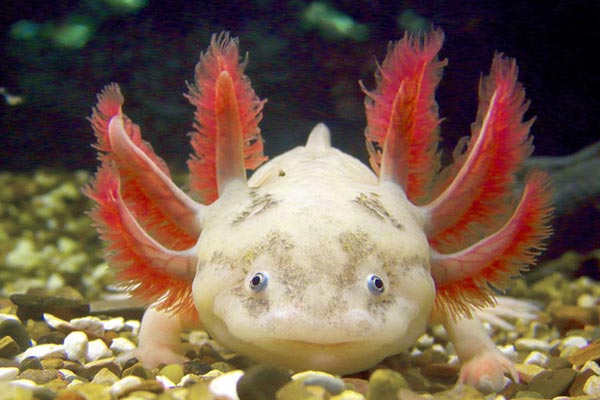
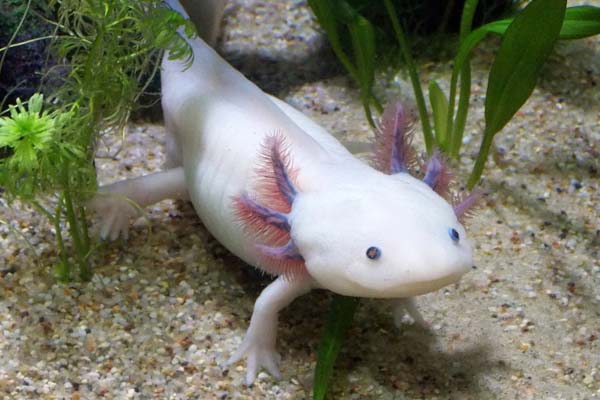
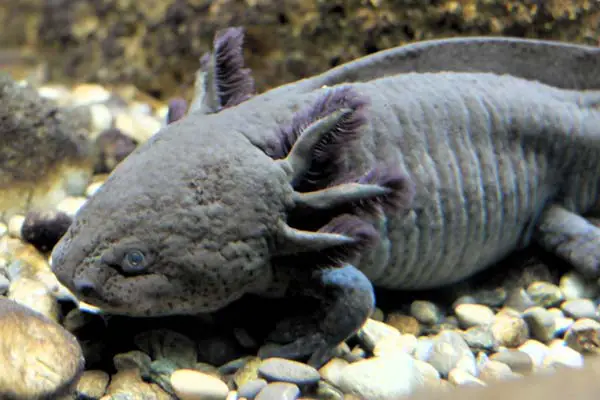
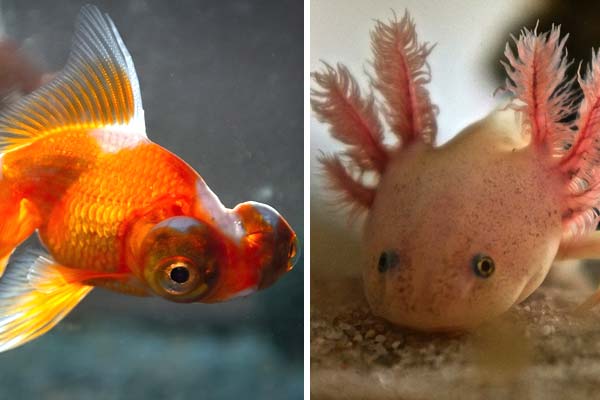
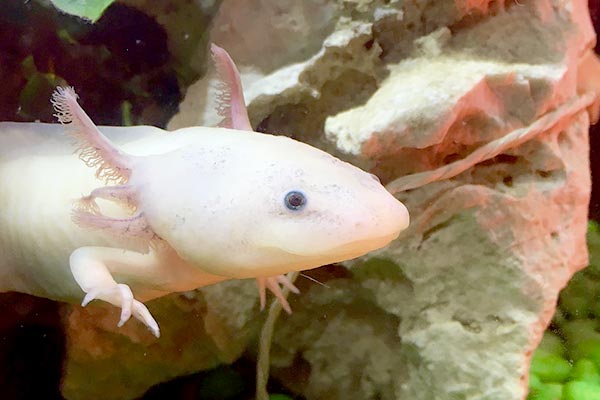
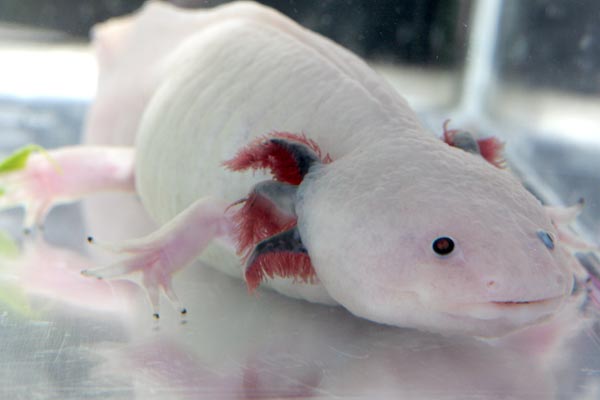
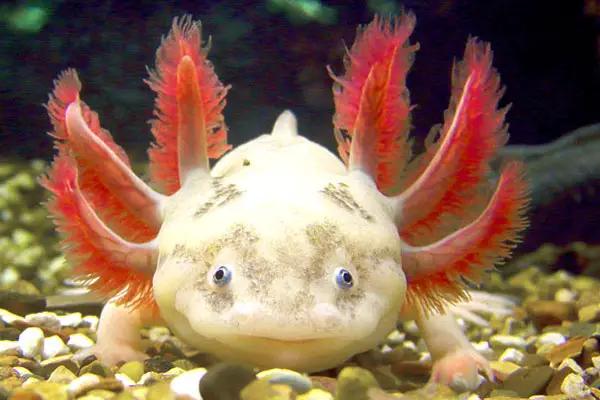
My female Axolotl just laid eggs 3 days ago. When i tried to feed her she eats the worm but just spits it back out. Is there something wrong or is this normal.